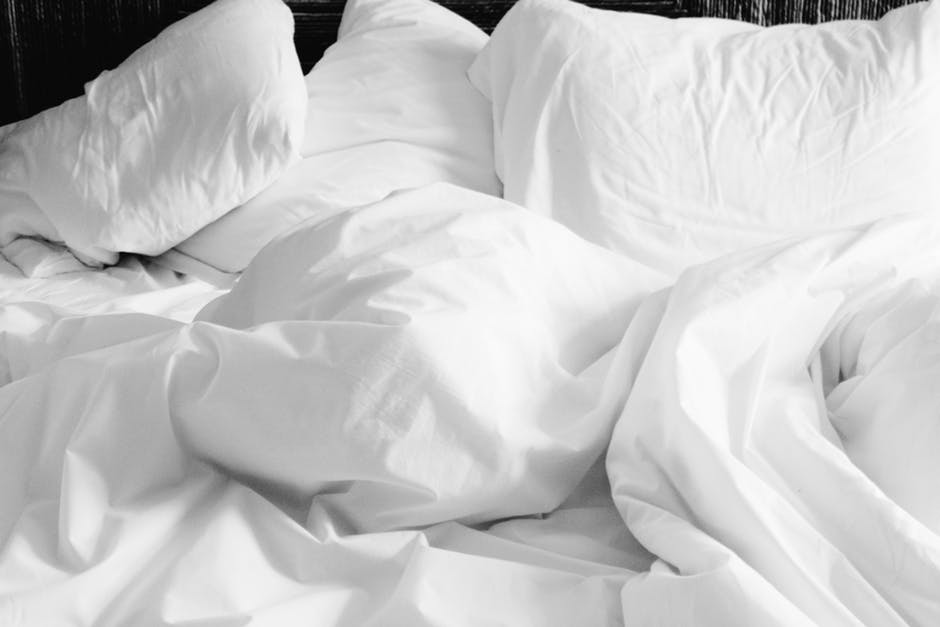
So you already have the best mattress, and you might know about cotton, flannel, or silk sheets. But have you heard about Tencel? Are you wondering, what is Tencel? This revolutionary fabric is soft for you and sustainable for the planet.
Learn all about what this fabric is made of and why you should consider it for your next sheet or clothing purchase!

What Is Tencel? What Is Tencel Fabric?
TENCEL™ is actually a brand name that’s owned by an Austrian company called Lenzing AG. The company seeks to address the fast fashion industry by making this more sustainable, alternative fabric for bedding and clothing.
Other brands use similar formulas to the official Tencel, but they might be manufactured differently. The official Tencel keeps sustainability in mind at every step of the process, which is part of what makes it such a revolutionary product.
How Is Tencel Made?
Tencel typically refers to a set of fibers called lyocell and modal. These fibers are actually made from trees, which are sustainably harvested. This means there’s a replacement model in place for the trees taken.
From there, the wood is made into wood chips and ground down into a wood pulp, which becomes the fiber of Tencel. Then, it’s spun into yarn and used as fabric to sew everyday products, from sheets to shorts!
Environmental Sustainability of Tencel
Tencel is biodegradable, which gives it a leg up on many other clothing items that are made from plastic. As it’s made from trees, there is also less concern about chemical harm and the dumping of chemicals into the environment.
The main company that manufactures Tencel is committed to full transparency and has a sustainability strategy. This is much better than what the current fast fashion and cotton industries use.
Health of Tencel
Cotton might be the world’s dirtiest crop. It’s sprayed with harmful pesticides that are known carcinogens and it’s a genetically modified crop. So why do we cuddle up with cotton sheets each night?
It’s cheap and typically subsidized to grow in the United States, which makes it an easy choice for many farmers. It does, however, take up a ton of land and water.
While organic cotton is somewhat better due to its lack of chemicals, cotton is still not a sustainable material even though it’s natural.
Tencel’s manufacturing process is much cleaner. Instead of the many toxic chemicals used in typical factories, Tencel uses fewer toxic chemicals, if any. These are often recycled back into the system instead of dumped into our waterways. Dumping harms local water supplies and the people living downstream.
In fact, the company boasts that 99% of the process is a closed-loop, which means each chemical used to make the wood pulp and process the fiber is used again.
Tencel vs Other Fibers
Tencel is highly rated for comfort and softness, which makes it perfect for bedding. Tencel bed sheets routinely perform better than cotton bed sheets. If you’re choosing Tencel vs cotton bed sheets, we choose Tencel purely from a health and comfort perspective.
For clothing, Tencel is great for athletic wear or loungewear. Sometimes, Tencel is mixed with other fibers and used in denim. By slowly replacing some of these harmful and chemical-ridden fabrics with Tencel, we can reduce our exposure to toxic chemicals and support brands prioritizing the planet.
Other Benefits of Tencel
In addition to its environmentally-friendly properties and desirable texture, Tencel has many benefits including that it’s:
- Moisture-wicking to keep you the perfect temperature
- Wrinkle-resistant, so it’s easy to maintain
- Machine washable for easy maintenance
Plus, Tencel doesn’t collect odors or bacteria like other fabrics do, which makes it a great material for Tencel bedding.
Downsides of Tencel
There is some concern about how Tencel’s wood is harvested. Although using a natural material like wood is generally considered better than something synthetic (for human health, impact on the environment, etc.), deforestation is a huge problem.
According to the World Bank, between 1990 and 2016, the world has lost more than 502,000 square miles of forested land. Not only does this harm local ecosystems and threaten wildlife, but it also releases dangerous greenhouse gases into the environment that fuel the damaging effects of climate change.
Tencel is made from eucalyptus and other trees that claim to be sustainably harvested. However, some of the sustainable harvesting certifications have been debunked by environmentalists who have proven that measures aren’t strict enough to actually protect our forests.
So, Should I Buy Tencel?
Yes! Although there is some debate, Tencel is apart of a wonderful movement to engage consumers in sustainability purchases and make them mindful of what their consumption does to the planet. While Tencel is biodegradable, it’s important to note that because of chemicals and dyes, that’s not always the best option.
However, since the manufacturing process for Tencel products is much more sustainable than traditional fiber manufacturing, we’re definitely on board with Tencel for everything!
You might find that Tencel is more expensive than other fabrics, but some of that cost might be due to the marketing brands put into it.
Now, you’ll find Tencel fabric in many popular stores like Anthropologie, Patagonia, and Lululemon. Since trends are moving more towards comfort and leisure, Tencel is becoming much more popular than it was even just a decade ago.
Next time you’re ready to buy a new mattress or sheet set, use mattress coupons, and don’t forget the Tencel!
Choosing Sustainable Fabric
Now that you’re no longer wondering “what is Tencel?”, it’s time to get some! Start sharing with your friends and family to spread the word on this incredible fabric’s useful properties.
For information on bedding, check out our informational blog to learn about what type of sheets to use on memory foam and more!
